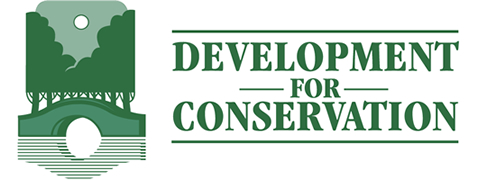
16 Dec Can We Just Start Over with Our Development Committee?
17 December 2024
By David Allen, Development for Conservation
Many land trusts have Board Development Committees that either focus on planning outreach events or serve as oversight committees for the Development staff. Neither is particularly helpful in raising money. Development Committees could address their work in a much more productive way by limiting their discussion to how Board members were interacting with donors. In other words,
- talk about specific donors, and
- talk about what Board members do instead of what staff does.
But HOW do you get your Development Committee to work like this when doing so would represent a huge change in board culture?
Great question, and one probably worthy of a Rally workshop. Here’s some possible answers:
Start with your Strategic Plan – After the Mission Statement, your Strategic Plan is ground zero for making cultural change. You shouldn’t build your organizational strategic plan around what the current Board members are most interested in and capable of doing. You should build your Board around what the Strategic Plan needs. You either have the organization you need to accomplish your strategic objectives or you don’t. And if you don’t, something needs to give.
When Board members approve the Strategic Plan, they also approve by implication the enabling programs, budget, and fundraising obligations that come with it. And governance structure! So, the Plan is where you start when you need to make changes.
Change needs a Champion – To be successful, the argument for change needs to be carried – “championed” – by a single member of the Board. Members of the staff are not normally able to hold Board members accountable. There are exceptions, of course, but they are almost always associated with exceptional staff leaders. Under most circumstances, a member of the Board must lead.
Staff members will find greater success working through a single Board champion, or a small group of Board champions, than trying to impose the change themselves. This is extremely frustrating, but it’s true.
Communicate a clear vision – Change needs a well-painted destination, a future state that convincingly connects new activities with desired results. And it cannot be delivered in a one-and-done manner, but rather must be continually restated by the Champion such that at each step of the way, participants see that the activity and the pathway are both necessary and connected.
Create momentum – In most cases THAT you start is more important than WHERE you start. That you are moving is the most important thing. I had the most trouble with this one at first. I was schooled in capital campaigns that you always started with the top of the pyramid. That may be true for campaigns, but it’s not necessarily true for other aspects of major gift fundraising. Instead I now advocate starting with whomever individual board members are most comfortable.
Sometimes this is called “little wins.” When Board members begin to see that their relationships with donors can deepen and watch as donors become more and more engaged, they will begin to feel ownership of the process themselves. And coming together and swapping stories about their experience becomes more and more fun.
Support new responsibilities with new systems – The systems you have in place right now either were created or evolved to support the current status quo. If you want to change the status quo, you will need to change the systems that support it.
Some examples include:
- Notes from the meetings read more as recordings of individual commitments than as “minutes.” What will be done and by whom between now and next meeting?
- Regular communications about major gifts that are made to the organization. Do Board members know the donors?
- Times and places for Board members and donors to meet each other.
- Knowing beforehand WHO is coming to a particular event and arranging for them to be introduced to organizational leaders.
- And regularly screening donor lists for major gift potential.
Planning to get your Development Committee to be more productive leading and managing Board members building relationships with donors is a lofty goal and will result in many big “wins” for your organization. But you won’t get there overnight. Get started in 2025, build the program in 2026, and plan to hit a new stride in 2027.
Happy Holidays!
Cheers, and Have a great week!
-da
PS: Your comments on these posts are welcomed and warmly requested. If you have not posted a comment before, or if you are using a new email address, please know that there may be a delay in seeing your posted comment. That’s my SPAM defense at work. I approve all comments as soon as I am able during the day.
Photo by NaturEyes courtesy of Pixaby.



Dennis Stephen Main
Posted at 06:37h, 17 DecemberExcellent! and very timely!!